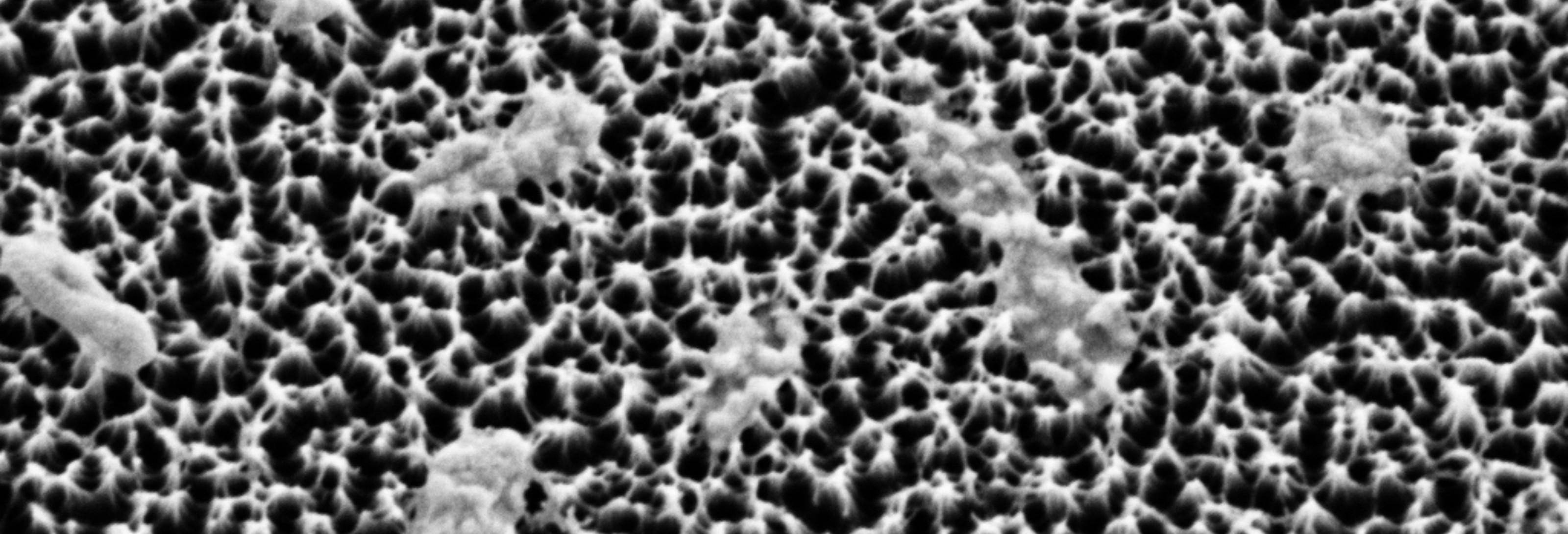Tent-like nanopillars to rupture bacteria
– Surabhi Chandra

Bacterial cells can attach to and colonise different metallic and polymer surfaces, including hospital beds, door handles, exhaust vents and other touch surfaces, causing infections and harming human health and lives. They can form biofilms on flat surfaces that can survive for hours or even days and transmit disease to vulnerable patients and the elderly. One strategy to reduce biofilm formation is changing the surface roughness by fabricating nanoscale structures that can rupture the bacterial cells. Different studies have focused on fabricating such patterns on hard materials like metals, ceramics and so on. But generating those structures on softer materials like polymer surfaces (synthetic plastics, rubber and so on) is less explored.
In a new study, Kaushik Chatterjee and his team from the Department of Materials Engineering, IISc, have developed bio-inspired nanostructures on poly (ethylene terephthalate) or PET that can physically rupture bacterial cells. PET is a commercial polymer having widespread use in packaging and biomedical industries.
The team wanted to understand what happens when tall nanopillars are patterned on PET surfaces, using an ion etching technique. They found that individually, each nanopillar was flexible and easily deformed, and not rigid enough to pierce a bacterial cell. But when crowded together into tent-like “superstructures”, the pillars become rigid enough to rupture bacterial membranes. These nanostructures were found to be durable and robust enough to withstand different forces that they would encounter during use. According to Anindo Roy, the lead author and a PhD student at IISc, such nanostructures can be fabricated on a variety of soft surfaces in food and packaging industries as well as in clinical settings to prevent bacterial contamination.
REFERENCE:
Roy A, Patil D, Yarlagadda PKDV, Chatterjee K, Cooperative Stiffening of Flexible High Aspect Ratio Nanostructures Impart Mechanobactericidal Activity to Soft Substrates, Journal of Colloid and Interface Science (2023).
https://www.sciencedirect.com/science/article/abs/pii/S0021979723017113
LAB WEBSITE:
https://sites.google.com/site/iiscbiomaterials/



